Does your home have a fire extinguisher? If so, does it have the right type of fire extinguisher? Suppose you’re not familiar with these lifesaving tools. In that case, you might be surprised to learn that there are various extinguishers, each designed to combat fires caused by a specific fuel source, such as combustible materials, flammable liquids, and electricity.
Here’s a comprehensive guide to selecting the right fire extinguisher.
Fire Extinguisher Categories
Every residential fire extinguisher is labeled as Class A, B, or C. This donates the extinguisher’s rating for combating specific types of fires.
- Class A: Puts out fires causes by common combustibles such as cloth, wood, and paper
- Class B: Use this for flammable liquids, such as grease, gasoline, and oil
- Class C: Suitable only for electrically charged fires. Use it wiring, fuses, circuit breakers, etc.
There are two other classifications: D and K. These are intended for industrial applications. A Class D fire extinguisher will douse burning metal. Likewise, Class K is used for commercial kitchen fires.
What you’ll find at most hardware stores are multipurpose extinguishers. The label on these units will typically feature all three classifications, each preceded by a number. The number signifies the level of effectiveness against the type of fire. For example, a label reading 10-A: 60-B:C suggests that this model would be more effective against combustibles than a fire extinguisher with a 4-A rating. (Class C does not have a numerical rating.)
Sizes of Fire Extinguishers and Where to Put Them
Fire extinguishers come in a range of sizes, from 2 to 20 pounds. Anything larger is overkill because smaller models can handle most residential blazes.
- Garage: Because this is a large space with flammable liquids such as gasoline and paint thinner, consider a 10-pound fire extinguisher that’s highly rated for Class B fires.
- Kitchen: A 5-pound tank will put out substantial kitchen blazes while being small enough to fit in a cabinet or pantry.
- Car: Stash a 2-pound model in the truck on mounting hardware to keep it from rolling around. Fire extinguishers specifically for cars are suitable for fires fueled by oil and grease and electrical blazes.
- Stove Top: The small magnetic canisters attach under the range hood to prevent four-burner stoves from starting a devastating kitchen fire. They’re activated when a cooking fire ignites a fuse on the underside of the canister.
Rechargeable Fire Extinguishers
A rechargeable fire extinguisher will cost more, but it’s cheaper in the long run because replacing disposable models is more expensive. However, you’ll have to ensure that the unit is maintaining adequate pressure.
When to recharge it:
After every use. The tank will continue to lose pressure after using the fire extinguisher even briefly. Take your rechargeable extinguisher to a local refill service immediately after putting out a blaze.
Every six to 12 years. The NFPA recommends having your portable rechargeable extinguisher professionally inspected every six to 12 years from the label’s manufacturing date.
When the pressure gauge is low. Check the pressure gauge on each extinguisher in your home and car monthly. The pressure gauge needle will be in the red on most models when it needs to be refilled.
Remember P.A.S.S.
Don’t wait for an emergency to learn how to put out a flame. Check with your local fire department to see fire-prevention classes are available to homeowners. In the meantime, remember this helpful acronym: P.A.S.S.
P: Pull the extinguisher’s safety pin
A: Aim the retardant at the source of the flames rather than flames themselves. (Keep at least six feet away from the blaze)
S: Squeeze the trigger and hold it, keeping the tank upright
S: Sweep the flame’s fuel until the tank is empty
Bottom line: Keep this critical lifesaving tool mounted near an exit so that you can douse the flame while backing out of the room to safety. And be sure to check the pressure gauge monthly to ensure the unit is operational. We know how devastating a fire can be, and we’ll guide you through the restoration process to return your home to its original condition. We’ll even deal with the insurance for you. To learn more, call Cut N Dry Restoration at (909) 829-5002.


